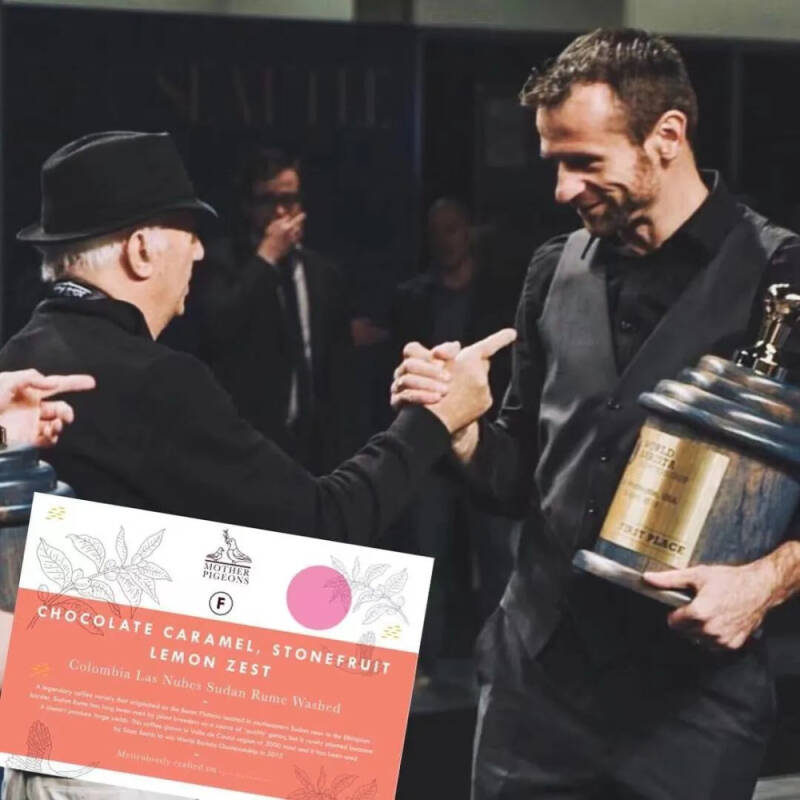Introduction to the Historical Origin of Sudan Rume Coffee beans and their taste characteristics

At the 2015 World baristas Competition (WBC), Australian contestant Sasa Sestic won the crown with a Sultan Lumi coffee with delicate floral scent, sweet juice and lemon grass aroma, successfully bringing this low-yield and well-known variety into public view.

I believe that many friends, like Qianjie, can probably get some clues from the name of this variety. As its name suggests, Sudan Rumei is the earliest native species of coffee growing on the African continent, specifically located in the Boma Plateau Plateau in southeastern Sudan (Rume Valley) near the western border of Ethiopia, that is, the present-day South Sudan Boma National Park, hence the name Sudan Rume, which is generally translated as "Lumi Sultan" or "Sudan Rumi" in China.
Until the 1940s, Sudan Rumei was an unknown natural wild species growing in tropical African forests bordering eastern South Sudan to the west of Ethiopia, characterized by brass leaves. In 1942, this wild variety was discovered and recorded under the code name "RS-510", which can be understood as the serial number of the wild coffee variety used in hybrid experiments. For more than 50 years since then, Sultan Rumi has been acting as the male parent in coffee hybridization experiments and is also known as the best Arabica provenance.
Looking through the materials in front of the street, we learned that the coffee trees in Lumei, Sudan, are tall and need to be pruned frequently to maintain a convenient picking height, and a large amount of phosphate fertilizer is needed, so the management cost is high. Its branch spacing and branch bud spacing are medium, coffee cherries will be scattered throughout the branches, the fruit will be moderately long, beans of different sizes, but the whole will not be as small as Essex beans. Like Rosa, the production of Rumei in Sudan is very low, so it is difficult to achieve large-scale commercial cultivation, and the only small batches that can be seen on the market are mainly from individual coffee farms in Central and South America.
Qianjie used to buy a Sultan Lumi coffee from Coffea diversa Garden, Costa Rica, which is traditionally washed and brewed with the bright acidity of lemon, plum and green apple, with a distinct juicy taste and a light oolong tea and sucrose taste in the finish.
Because of its excellent flavor and certain disease resistance genes, especially for coffee berry disease (CBD), Sultan Lumi is more likely to be used as a breeding variety than to produce it alone. When the researchers hybridize Sudan Lumei with excellent blood with other varieties, they can usually get new varieties with good flavor, strong disease resistance and good yield. Many well-known modern varieties, such as Castillo, a masterpiece of the National Coffee Research Center of Colombia, and SL28, a high-quality variety representative from Kenya, are obtained in this way.
In recent years, with the continuous improvement of the quality of coffee cultivation, not only more and more coffee farmers have begun to plant Sudan Lumi, but they have also made new discoveries about this rare variety in the process of cultivation and planting. A Sultan Lumi coffee tree is in the mature stage, unexpectedly bearing rare yellow fruit like bourbon. Perhaps in the near future, Huangguo Sultan Lumi will appear on the market.
-END-
Front Street Cafe
No. 10 Baoqian street, Yandun road, Dongshankou, Yuexiu district, Guangzhou, Guangdong province
Important Notice :
前街咖啡 FrontStreet Coffee has moved to new addredd:
FrontStreet Coffee Address: 315,Donghua East Road,GuangZhou
Tel:020 38364473
- Prev

Introduction to small cups of espresso: Campbell blue, macchiato, piccolo coffee
Coffee, as one of the three major drinks in the world, has developed a unique system after a long period of precipitation, in which there are many small cups of coffee that are fascinating just by hearing the name, which can be finished by ordinary people in two or three mouthfuls. Focus on a high efficiency to enjoy the fun of coffee drinks. I will take an inventory with you in the front street today.
- Next

Secretly change the rules! Lucky 9.9 designated drinks cause dissatisfaction
▲ Click to follow | Daily boutique Coffee Culture Magazine Coffee Workshop Last year the coffee industry's biggest circle was probably the low-cost coffee discount war between Lucky and Cudy. This commercial war can be said to be a carnival for consumers. In the past, the impression that a cup of coffee could be drunk for less than 10 yuan and sucked successfully.
Related
- Customers have "changed" Manner's new products! Shop assistant: Please don't mess around!
- Remove sockets in customer areas at Starbucks stores?! Netizen: I won't go if I really tear it down
- What is the difference between the taste steps of sun-dried coffee and washed coffee? Why is sun-cured coffee sweeter and washed coffee sour?
- The recipe for salty grapefruit dirty is revealed! Coffee Festival salty grapefruit dirty coffee making materials parameters ratio milk share!
- How about the flavor of Sunlight 74158 at Sidamo Banshaha Mathieu Processing Factory in Ethiopia? 74158 Share the proportion of coffee brewing parameters!
- What effect does Italian American coffee with filter paper have? Will coffee taste better if it is put on filter paper at the bottom of the powder bowl?
- What is the color difference in coffee beans? What are the characteristics of honey processed coffee beans? Why are the anaerobically treated coffee beans uneven in color?
- How does novice Xiaobai quickly get started and make coffee? Newbies learn to make coffee by hand and share the specific steps and process process!
- Costa tea has a shelf life of 100 years?! Expert: Unable to verify
- It's a huge uproar! American milk addition was rejected by Manner employees?!

